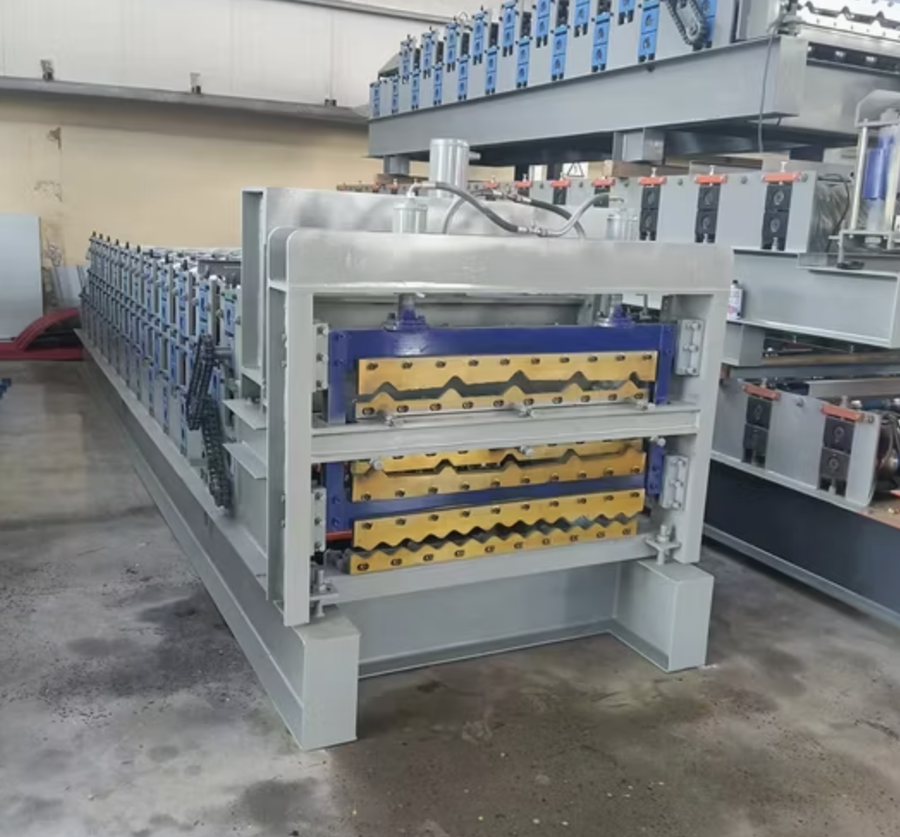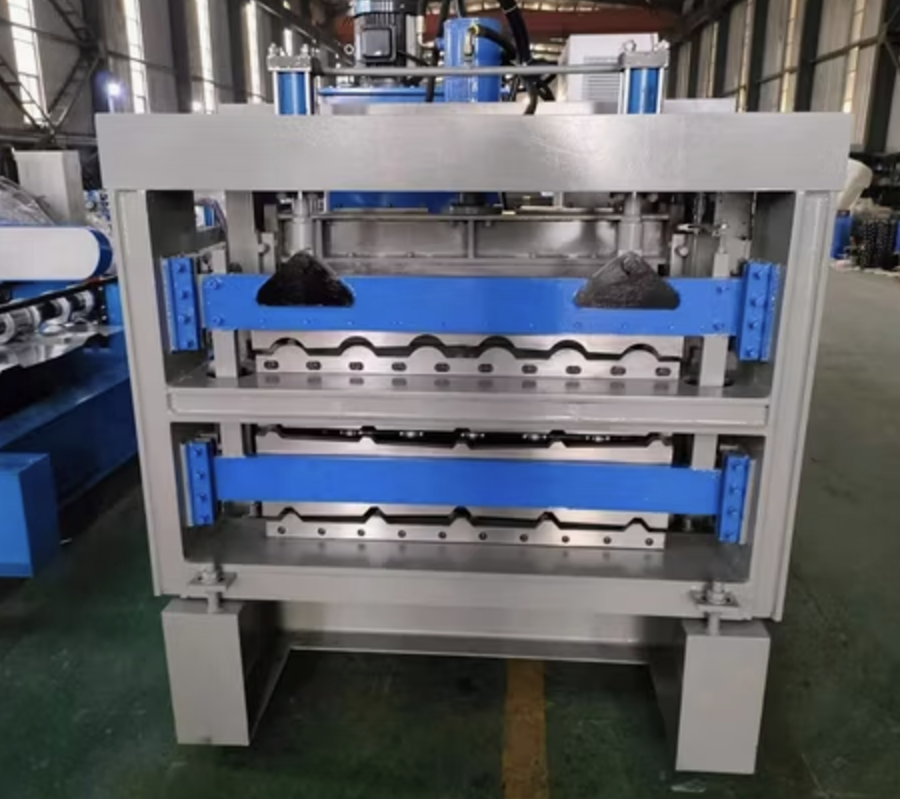To express an interest in this machine please submit the form below.

Not Sure What Machine You Need?
Select Your Profile, We'll Match It
Choose your desired profile drawing, and let Machine Matcher connect you with the best roll forming machine tailored to your needs.
Browse Profiles


A Double Layer Roll Forming Machine is a versatile and efficient solution designed to produce two distinct profiles on a single machine. It is widely used in the roofing and cladding industries, offering a cost-effective and space-saving alternative to owning two separate machines. With applications ranging from residential to industrial construction, these machines are popular in the UK market due to their ability to meet diverse production needs while maintaining high-quality standards.
The Double Layer Roll Forming Machine comprises an upper and a lower forming section, allowing it to produce two profiles (e.g., trapezoidal roofing and corrugated panels) without requiring additional space or equipment. Operators can switch between profiles through a simple control panel operation, reducing downtime and enhancing productivity.
The machine is equipped with advanced technologies, such as a PLC control system, to ensure accuracy and reliability. Its compact design makes it ideal for manufacturers in the UK, where efficient use of space is a priority.
Below are the detailed specifications of a typical Double Layer Roll Forming Machine:
The machine can handle a variety of materials, including galvanized steel, pre-painted steel, aluminum, and other coated metals. Material thickness typically ranges from 0.3 mm to 0.8 mm.
Yes, the machine can be customized to produce profiles that meet UK industry standards and customer-specific requirements.
Delivery times can vary depending on customization. For standard configurations, delivery typically takes 30-60 days.
Regular maintenance includes lubrication of moving parts, inspection of rollers, and ensuring the PLC system is updated. The hydraulic system should also be checked for fluid levels and leaks.
Yes, many manufacturers and distributors offer financing options for businesses in the UK. Consult with your supplier for tailored plans.
Most Double Layer Roll Forming Machines come with a 12-24 month warranty covering parts and labor, depending on the manufacturer.
The machine switches between profiles using a hydraulic lifting system and PLC commands. The operator can toggle profiles through the control panel, which ensures a smooth transition.
Yes, with its dual-profile capability and robust design, it is well-suited for high-volume production needs in both residential and commercial projects.
Copyright 2025 © Machine Matcher.